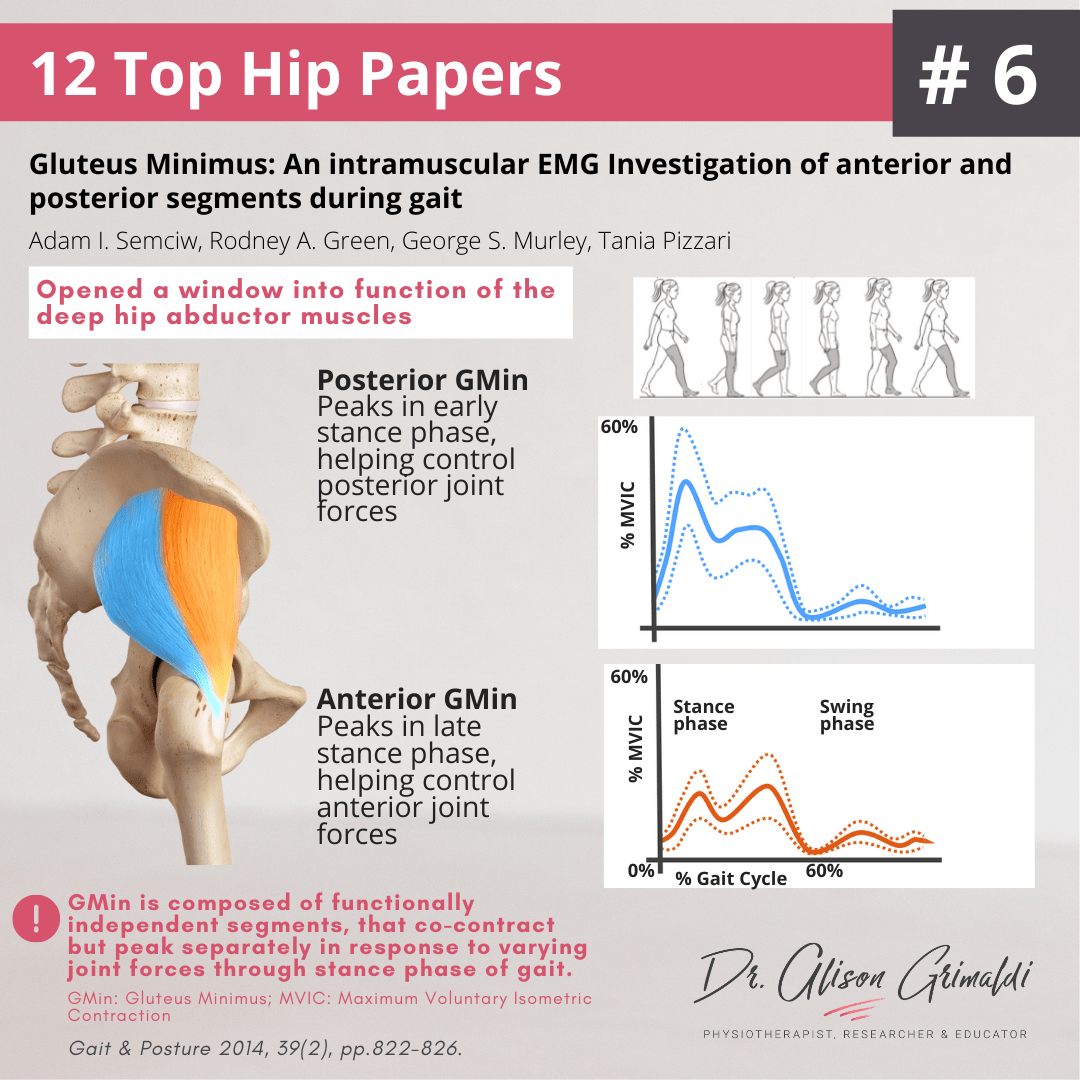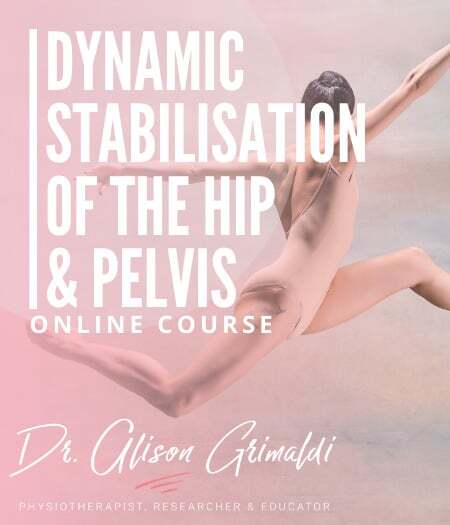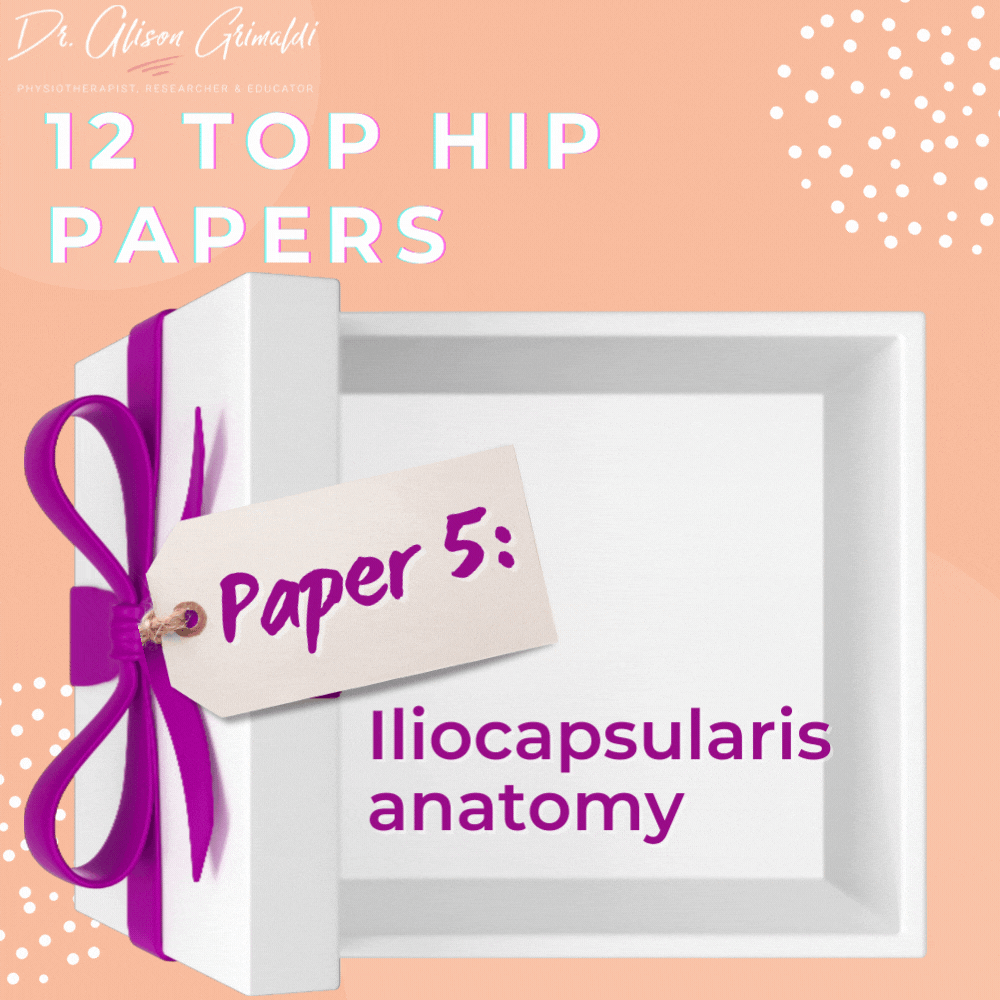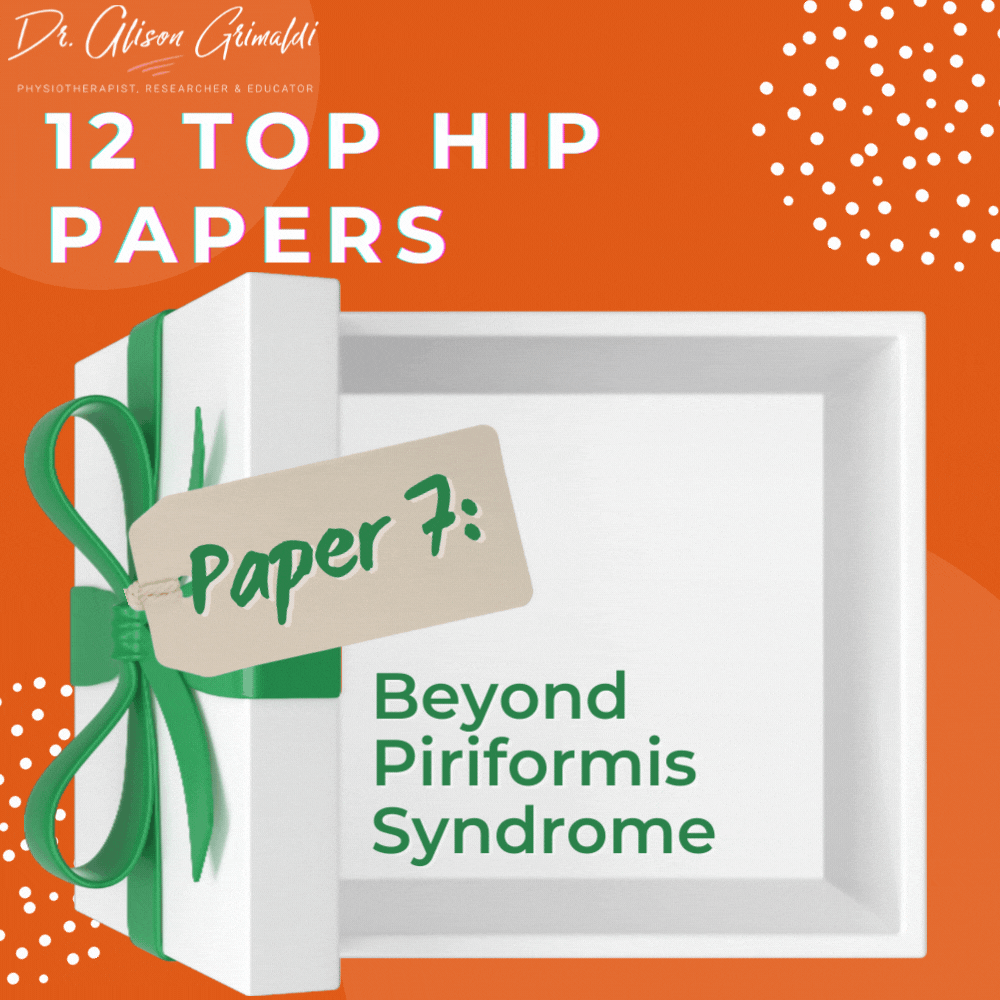6 of 12 Top Hip Papers – Gluteus Minimus EMG in Gait

We are half way through already! This is the 6th of my 12 Top Hip Papers miniblog series, featuring 12 papers that have contributed strongly to our understanding of hip conditions and/or the assessment or management of hip pain or injury. Return to the main blogpage if you'd like to revisit any of the earlier paper posts. Yesterday we talked about the rediscovery of a long forgotten muscle, today we talk about another deep hip muscle, the gluteus minimus. Prior to the publication of this paper, the function of this muscle had largely been assumed from its anatomical structure. This research that reported on gluteus minimus EMG in gait, opened a window into dynamic function of this deep hip abductor muscle. Below you'll find an infographic and key learnings for this paper.

For your convenience, we have also developed this content into a FREE 26-page full colour ebook!
Packed full of 12 Top Hip Papers - peer reviewed scientific papers that have contributed to our understanding of hip conditions and/or the assessment or management of hip pain or injury.
PAPER 6: Gluteus minimus: An intramuscular EMG investigation of anterior and posterior segments during gait
Prior to this work, the only electromyographic (EMG) study published for gluteus minimus was in 1976, reporting data from a single electrode during hip motions in lying. Almost 4 decades later, Adam Semciw and colleagues delivered some much-awaited functional EMG data for this incredibly important muscle. With strong attachments to the joint capsule, the gluteus minimus is thought to contribute significantly to control of capsular tension, femoral head translation and joint stability, playing an integral role in joint protection. This was the first study to collect separate information on anterior and posterior fibres of gluteus minimus, able to then determine conclusively that gluteus minimus is composed of functionally unique segments and that they behave differently during function.

Key learnings about gluteus minimus EMG in gait:
While these segments co-contract during gait, their peaks of activation are different:
- the posterior fibres peak during early stance to assist in controlling the posteriorly directed ground reaction force that challenges the posterior capsule in the loading phase of gait,
- the anterior fibres peak in activation in late stance, to control the anteriorly directed forces during hip extension.
This paper also reported activation of the segments during hip motion, showing that:
- the anterior segment is more active than the posterior segment during hip internal rotation,
- the posterior segment is much more active than the anterior segment during the clam action (hip abduction – external rotation),
- both segments are strongly active in resisted hip extension – reflecting a joint stability role rather than a torque production role in this action.
These authors had also published an EMG technique paper in the previous year. These papers opened the doors for others to research the function of this deep hip muscle… and they did. We now have further information on the function of this muscle in those with hip pain and pathology with direct implications for intervention. While there is still much more to explore, science now has the capacity to provide the answers.
Like to learn more about hip muscle structure and function?
In this course, you can find heaps of information on hip muscle structure, function, dysfunction and implications for exercise prescription. This course is included in Hip Academy, so if you are interested in other courses as well, join me in Hip Academy, and be part of an exclusive global community of physios and health & exercise professionals.
I hope you enjoyed the infographic and key learnings from Day 6 of my 12 Top Hip Papers. There are 6 more papers to come, so stay tuned and return to the blog page each day to see what other top papers and infographics I have for you!

Join Hip Academy Today
Join Hip Academy Today
By becoming a member today you can enjoy the benefits of a world class educational Hip Program, specifically designed by Dr Alison Grimaldi to help improve your knowledge surrounding the Hip and Pelvis, and become an expert in your field.
By becoming a member today you can enjoy the benefits of a world class educational Hip Program, specifically designed by Dr Alison Grimaldi to help improve your knowledge surrounding the Hip and Pelvis, and become an expert in your field.



